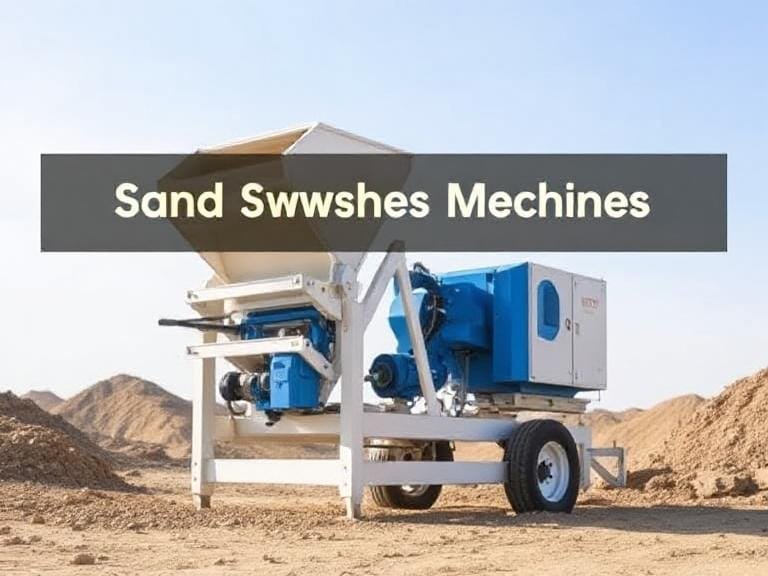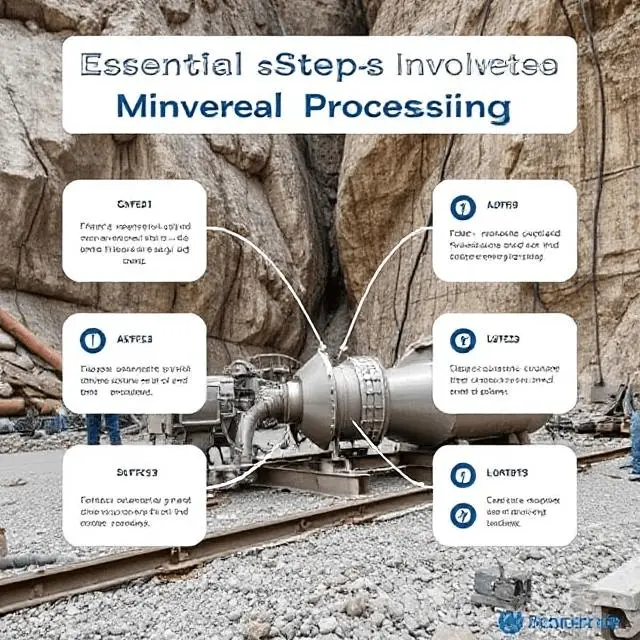How Does Magnetic Separation Work? Understanding the Process and Applications in Mining and Industry
Table of Contents:
- Introduction to Magnetic Separation
- How Does Magnetic Separation Work?
- Basic Principles of Magnetic Separation
- Types of Magnetic Separation
- Applications of Magnetic Separation
- Benefits of Magnetic Separation
- ORO Mineral Co., Ltd. and Magnetic Separation
- Common FAQ About Magnetic Separation
- Conclusion
Introduction to Magnetic Separation
Magnetic separation is a widely used process in industries like mining, recycling, and waste management, where the goal is to extract specific minerals or metals from a mixture of materials. This technique uses magnetic fields to remove or separate materials based on their magnetic properties. Magnetic separation is crucial in various applications, including the extraction of valuable minerals from ore and the recovery of metals from industrial waste.
In this article, we’ll delve into how magnetic separation works, its types, applications, and why it’s an essential technology in several industries. We will also introduce ORO Mineral Co., Ltd., a key player in mineral processing and separation, that provides innovative magnetic separation solutions.

How Does Magnetic Separation Work?
Magnetic separation works on the basic principle of utilizing the magnetic properties of different materials to separate them. The process involves applying a magnetic field to a mixture of materials, with the magnetic particles being attracted to a magnet, while non-magnetic particles remain unaffected.
1. Basic Principles of Magnetic Separation
At its core, magnetic separation relies on the magnetic susceptibility of materials. Some materials, like iron, nickel, and cobalt, are naturally magnetic or ferromagnetic, meaning they are attracted to a magnetic field. Others are paramagnetic or diamagnetic, meaning they are either weakly attracted or repelled by a magnetic field. Based on this differential response to magnetic fields, magnetic separation efficiently sorts materials.
There are two primary categories of magnetic separation:
- Ferromagnetic Materials: These materials are strongly attracted to magnets. For example, iron, steel, and some rare earth metals.
- Non-ferromagnetic Materials: These include materials like aluminum, copper, and plastic, which are not attracted to magnets.
The process uses magnetic forces to isolate ferromagnetic materials from a mixture of non-ferromagnetic ones, thereby enabling their extraction or removal.
2. Types of Magnetic Separation
Magnetic separation techniques vary depending on the material to be separated, the type of magnet used, and the specific requirements of the process. Here are the most commonly used types:
1.1. Magnetic Drum Separator
Magnetic drum separators consist of a rotating drum with magnetic poles that attract ferromagnetic materials as they pass by. This method is often used for bulk materials where continuous separation is required.
Applications:
- Ore processing
- Recycling plants for metal recovery
- Aggregate industries
1.2. Magnetic Belt Separator

A magnetic belt separator is used for materials that need to be conveyed while being separated. The magnetic belt moves over a conveyor system, attracting ferromagnetic materials while allowing non-magnetic materials to fall off.
Applications:
- Mining and mineral processing
- Sand and gravel industry
- Food and pharmaceutical industries
1.3. High-Gradient Magnetic Separation (HGMS)
In high-gradient magnetic separation, magnetic fields are intensified by placing the sample material in a high-gradient field. The result is a stronger magnetic pull that can separate even weakly magnetic materials.
Applications:
- Wastewater treatment
- High-precision mineral processing
- Metal recovery from waste streams
1.4. Overhead Magnetic Separator
Used in heavy-duty applications, overhead magnetic separators are mounted above conveyors to catch ferrous contaminants. These separators are commonly seen in industries handling bulk materials.
Applications:
- Cement industry
- Power plants
- Steel manufacturing
Applications of Magnetic Separation
Magnetic separation is employed in a variety of industries due to its effectiveness in removing or extracting certain materials. Here are some common applications:
2.1. Mining and Mineral Processing
Magnetic separation is widely used in the mining industry to separate valuable minerals from ore. For example, iron ore is often separated from other materials using magnetic separators, which extract the ferrous material while leaving behind non-magnetic impurities.
- Example: The extraction of magnetite from iron ore.
- Benefit: Improves the efficiency of mineral extraction and reduces processing costs.
2.2. Recycling Industry
In recycling, magnetic separation is used to separate ferrous metals (like iron and steel) from non-ferrous materials, such as aluminum, plastic, and paper. This helps to recover valuable metals while ensuring that non-ferrous waste is processed separately.
- Example: Recovery of steel and iron scrap.
- Benefit: Increases the quality of recycled materials and reduces contamination.
2.3. Wastewater Treatment
In wastewater treatment plants, high-gradient magnetic separation is used to remove suspended magnetic particles from water. This technique helps to purify the water before it is released into the environment.
- Example: Removal of heavy metals from industrial effluent.
- Benefit: Ensures that the water meets environmental discharge standards.
2.4. Food Industry
Magnetic separation is used to remove metal contaminants from food products to ensure food safety. Magnets are used to extract ferrous particles from grains, spices, and other food materials.
- Example: Removal of metal contaminants from rice or flour.
- Benefit: Prevents equipment damage and ensures food safety.
Benefits of Magnetic Separation
Magnetic separation offers several benefits across various industries:
3.1. Efficiency and Cost-Effectiveness
Magnetic separation offers a highly efficient method for sorting materials without the need for chemicals or complex processes. This reduces the cost of production and increases overall efficiency.
3.2. Environmentally Friendly
Unlike chemical separation methods, magnetic separation is environmentally friendly. It does not produce harmful waste, making it a sustainable solution for material processing.
3.3. High Precision
Magnetic separation, particularly high-gradient magnetic separation, can extract even the smallest particles, which is crucial in industries like mining and food processing where precision is key.
3.4. Easy to Integrate
Magnetic separation systems can be easily integrated into existing production lines, minimizing downtime and improving overall workflow.
ORO Mineral Co., Ltd. and Magnetic Separation

ORO Mineral Co., Ltd. is a prominent manufacturer of intelligent mineral processing equipment, including magnetic separation machines. Since its establishment in 2014, ORO Mineral has been at the forefront of providing high-quality separation and beneficiation equipment, making significant contributions to industries such as mining, sand washing, and solid waste resource recovery.
ORO Mineral’s Magnetic Separation Products:
- Magnetic Separation Machine: Designed for efficient separation of ferromagnetic materials from non-ferromagnetic materials, ORO’s magnetic separation machines are widely used in the mining industry and other sectors where material purity is crucial.
- Gravity Separation Machines: These machines complement magnetic separation systems and provide an added layer of purification by using the difference in material densities.
- Classifying Machinery: Used in conjunction with magnetic separation, classifying machines help segregate materials by size and density, further enhancing the purity of the final product.
- Screening Machinery: These machines are used to pre-process materials before magnetic separation, ensuring that only the desired particles are subjected to the magnetic field.
Common FAQ About Magnetic Separation
1. What materials can be separated using magnetic separation?
Magnetic separation is primarily used for ferromagnetic materials such as iron, nickel, and cobalt. It can also be used for certain paramagnetic materials with a weak magnetic response, although this requires specialized equipment.
2. Is magnetic separation environmentally friendly?
Yes, magnetic separation is an environmentally friendly technique as it doesn’t require the use of harmful chemicals, making it a sustainable choice for industries like mining and recycling.
3. Can magnetic separation be used for small particles?
Yes, high-gradient magnetic separation can be used to capture even very small particles, making it ideal for fine mineral processing and the removal of contaminants in wastewater treatment.
Conclusion
Magnetic separation plays an essential role in various industries, from mining to recycling and food processing. By leveraging the power of magnetic fields, industries can achieve efficient separation of materials, leading to higher-quality products, improved efficiency, and reduced costs. Companies like ORO Mineral Co., Ltd. are leading the way in providing cutting-edge magnetic separation solutions, offering both standard and custom equipment to meet the specific needs of their clients.
As industries continue to evolve, magnetic separation technology will remain a vital tool in material processing, driving efficiency and sustainability across multiple sectors.




